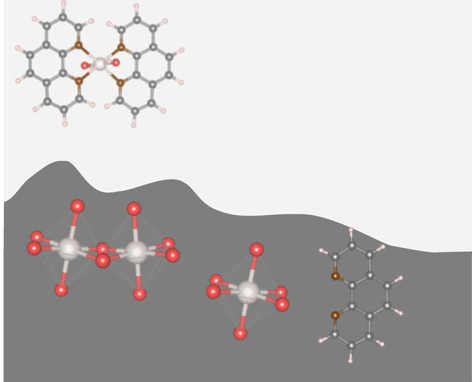

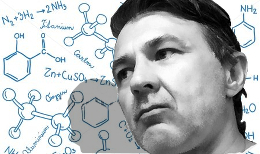

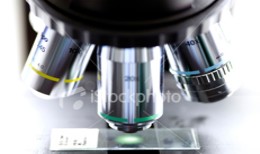


professor Matjaz Valant
(orcid.org/0000-0003-4842-5676)
University of Nova Gorica
Head of Materials Research Laboratory (see video)
Campus Ajdovscina
Vipavska 11c, 5270 Ajdovscina
Slovenia
Phone: +386 5 3653502
Fax: +386 5 3653527
matjaz.valant(at)ung.si
Adjunct Professor
University of Electronic Science and Technology of China
Institute of Fundamental and Frontier Sciences
Chengdu 610054, China

CoFe2O4 - new molecular auxetic material
M. Valant, A.-K. Axelsson, F. Aguesse, N.M. Alford, Adv. Funct. Mater., 20, 644–647 (2010)
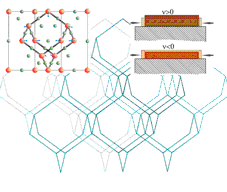
Auxetic materials laterally expand under uniaxial tension or laterally shrink under uniaxial compression. Possible applications range from strain amplifiers, optical pressure sensors, tunable molecular sieves, artificial veins and muscles... In functional oxide materials the so called molecular auxetic behavior is extremely rare. We discovered it in CoFe2O4 spinel structure. We identified the hinge-like honeycomb network in the spinel structure that is responsible for the negative Poisson's ratio.
Fig: 3D auxetic honeycomb CoFe2O4 network, constructed by connecting the strongest bonds in spinel, viewed along [201] direction.
No intrinsic magnetism in Mn-doped KTaO3 and SrTiO3
M. Valant et al. Chem. Mater.,
22, 1952-1954
(2010) DOI: 10.1021/cm100017s
Adv. Funct. Mater. (2012) DOI: 10.1002/adfm.201102482
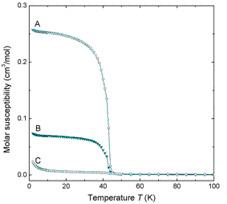
No evidence of long-range spin ordering or spin glass behaviour was found in well-processed Mn-doped KTaO3 and SrTiO3. If the magnetic anomaly is detected it is of an extrinsic nature from Mn clustering, which results in an antiferromagnetic response. The intrinsic spin coupling including any spin glass state is not present in these system as it has been beleived so far.
Fig: Decrease in magnetic susceptibility of 3%Mn-doped KTaO3 with applied processing method (A) homogenization and firing at 1000oC, (B) high-energy milling and firing at 1000oC, (C) second-step firing at 1350oC.
New Pyrochlore Spin Glass
G.S. Babu, M. Valant, K. Page, A. LLobet, T Kolodiazhnyi, A.-K. Axelsson, N. M. Alford,
Chem. Mater., 23, 2619–2625 (2011). DOI: 10.1021/cm200281z
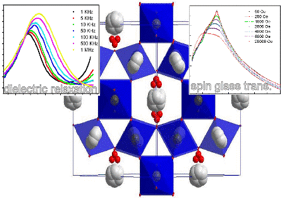
The synthesized Bi-Te-Fe pyrochlore is characterized with so far the highest Fe content among pyrochlores. Consequently, it exhibits a strong spin glass magnetic transition at around 20K. Neutron diffraction analysis showed that A-site ions (Bi/Fe) displace to 96g and O' to 32e positions.
Fig: The crystal structure of the new spin glass pyrochlore with its magnetic and dielectric curves
BiFeO3 synthesis tamed
M. Valant, A.K. Axelsson, N.M. Alford, Chem. Mater. 19 (22): 5431-5436 (2007)
BiFeO3 is one of the most investigated multiferroic ceramic materials. The paradox, however, was that till recently we had not understood the basic conditions for a solid-state synthesis of the single phase powder.
......Our studies proved that the successful synthesis of single-phase BiFeO3 essentially depends on the purity of the starting materials. Because of peculiarities of the phase relations, a small concentration of impurities generates a large fraction of secondary phases.
Fig.: Several possible phase diagram configurations that leads to high amount of secondary phases during the synthesis of BiFeO3
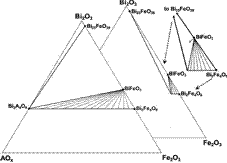
Anisotropy od electrocaloric effect
Adv. Energy Mater. 2014, 1301688
Anisotropy of the electrocaloric effect was theoretically and experimentally confirmed in a relaxor ferroelectric. The study has been performed on single crystals of tungsten bronze Sr0.75Ba0.25Nb2O6 analyzed in polar <001> and non-polar <100> direction. EC materials can benefit from exploitation of the strong anisotropy in crystallographically oriented systems.
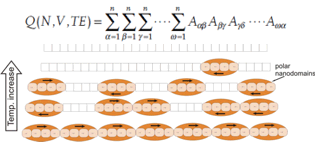
No intrinsic magnetization in Fe-doped 6H-BaTiO3
Sci. Rep., 5., 7703 (2015)
Our results demonstrate that the intricate static magnetism of the hexagonal phase is not intrinsic, but rather stems from sparse strain-induced pseudocubic regions. We point out the vital role of internal strain in establishing defect ferromagnetism in systems with competing structural phases.
Figure: Structural relationship on
the interface between BaTiO3
perovskite
and 6H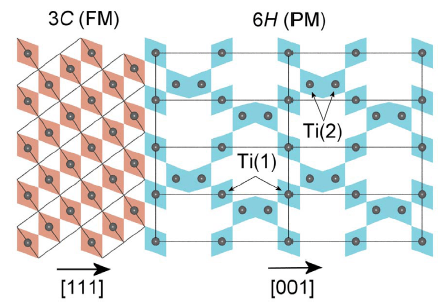 -BaTiO3
-BaTiO3
structure
Two new toys at Material
Research Laboratory
TA-MS and XRD
July, 2015
We have enlarged our set of analytical and
experimental facilities with the state-of-the-art
instruments that will enhance our research
on electrochemical synthesis of preceramic
polymers, studies of amorphous alumina,
oxide and non-oxide nanopowders for
photocatalysis, topoplogical insulators,
high-temperature equilibria, phase transformations
etc.
The instruments were bought from the FP7
SUNGREEN grant.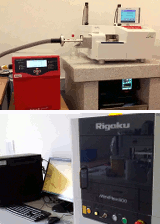
Electrocaloric materials - a critical review
M. Valant, Prog. Mater. Sci (2012) DOI: 10.1016/j.pmatsci.2012.02.001
An insightful review on the progress in the EC material and technology research and critical discussions on the major advances in order to present a compact picture of the state-of-the-art, extract new knowledge and propose promising future research directions.
An important reading for anyone that is entering in this field and those that search for new research directions.
Fig: To compensate for dipol alignement caused by the external electric field the crystal temperature must rise to keep the total entropy constant, under adiabatic conditions.
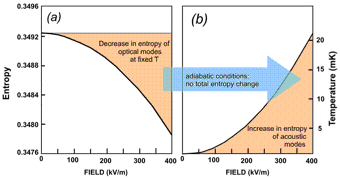




We've done our thing
We have evolved
We're up on our hind legs
The problem's solved
We are artists
We are mathematicians
Some of us hold extremely
High positions
But we are tired
We're hardly breathing
And we're free
Go tell the women that we're leaving
(Grinderman, 2007)
7FP project SUNGREEN
Nova Gorica, Slovenia 01.10.2011
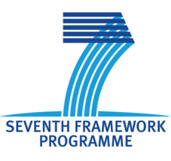
Within 7FP SUNGREEN project Univerity of Nova Gorica will recruit several experienced researchers from different specialized fields of materials science, physics of condense matter and solid-state chemistry.
The SUNGREEN project aims to reinforce the University of Nova Gorica (UNG) by increasing the human, organizational and infrastructural capacity in environmental science and novel nano-structured materials. The UNG is supported by four top-class European institutions:
Imperial College London,
- Ecole Polytechnique Federale de Laussane (EPFL)
- Delft University of Technology
- Sincrotrone Elettra S.C.p.A.
President fo Republic of Slovenia, dr. Danilo Türk, visited Materials Research Laboratory
24.04.2012
During his visit of our university campus dr. Danilo Türk also visited our laboratories where he was informed with our research. He has found it very relevant for future alternative energy solutions and showed interest in our intensive collaboration with industry.
(foto: Andreja Leban)
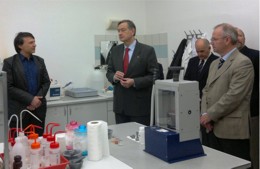
European Conference on Materials and Technologies for Sustainable Growth - ECo MaTech 2013
13.1.2013
Topics:
- Waste and pollution treatment
- New Cooling Technologies
- Technologies for Energy Conversion
- Energy storage and distribution technologies
- Environmental impact
- Mini-symposia (Surface science, FEL and
synchrotron based technique, operando methods)
Eco MaTech is an initiative of the:
- Helmholtz Center Berlin,
- Delft University of Technology, For more information see
- Ecole Polytechnique de Lausanne, http://eco-matech.ung.si/
- Imperial College,
- Synchrotron Elettra and
- University of Nova Gorica
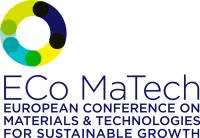
New field-emission TEM and SEM installed
January 2014
The installed JEOL field emission TEM (JEM-2100F UHR) and SEM (JSM 7100F TTLS) are characterized with a superior spatial resolution within their classes of microscopes. In addition to standard analytical attachments, TEM is equipped with UHR pole piece and STEM module, SEM with cathodoluminescence analyzer.
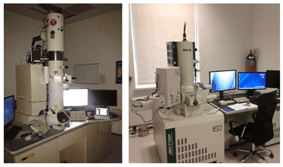
Cation ordering in 6H-BaTiO3
M. Valant et al. Chem. Mater., 2013, 25, 3544−3550
We discovered and analyzed thermally
induced ordering of Fe ions in 6H-BaTiO3
lattice. The observed continuous order−disorder
transition does not prove the intrinsic
room-temperature dilute ferromagnetism that is
claimed in the literature.
Fig.: Fe ion distribution in the ordered phase of
6H-BaTiO3
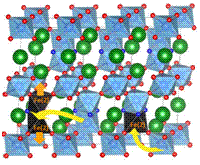
Video clip of the Materials Research Laboratory
13.03.2012
Together with our School for Digital Art we have created a somewhat different video clip of our laboratory.
short web-friendly (13 Mb, 41s)
see it
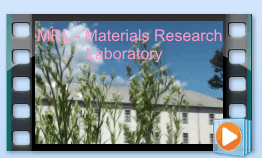
Intensive collaboration with CEA - CADHARD project
2015-2017
The intensive collaboration with CEA has been further intensified by start of a joined research project, financed by Slovenian Research Agency and CEA.
With the CADHARD project we are upgrading our
current collaboration with studies on hardening of
silica-based components for extreme environments.
The project involves a theoretical approach by
computational modelling of defects in amorphous
silica as well as an experimental analysis of the
defects by a cathodoluminiscence spectroscopy
(Responsible researcher: L. Samos-Martin)
Figure: Panchromatic cathodoluminiscence image
of an optical fiber cross-section showing distribution
of defects (by M. Fanetti).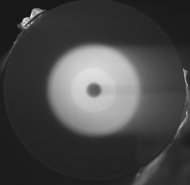
Material Research Lab leading an EU partnership for
future Magnesium
January, 2016
A three-year project, financed by Slovenian Research Agency and Austrian FWF, enabled to join the forces of University of Nova Gorica (SI), Vienna (AT) and Lund (SE) with Institute for Metals and Technologies (SI) on R&D work on magnesium for future medical applications.
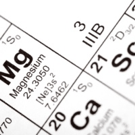 Our research is focused on studying the oxidation
Our research is focused on studying the oxidation
mechanism, tuning the corrosion resistance and
mechanical properties to the values desired for
different medical implants.
(PI: D. Orlov) - for more see the link
Stabilization of amorphous alumina
Adv. Funct. Mater. (2016)
DOI: 10.1002/adfm.201600213
The strain-induced high-temperature stabilization
of amorphous alumina was obtained by dispersion
of rigid globular polycarbosilane macromolecules
within the alumina matrix. This nanocomposite is
a base for a new facile and inexpensive coating for
mechanical protection of glass surfaces.
The nanocomposite coating is characterized by
a full optical transparency and exceptional
tribological characteristics.
Figure: Schematics and TEM image of the coating
structure, and AFM of a scratch groove on the
coated and uncoated surface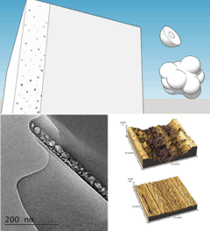
Materials Research Lab expands and starts new research directions
1.6.2017
1.) With new grants and newly employed researchers
we expand our research in a field of hydrogen
production
by green algae and application of the
autogenous hydrogen for different environmental
technologies.
2.) The lab has obtain yet another National Research
Program, this time for Modelling and Simulation of
Materials and Processes. This will enable us to study
advanced materials, such as topological insulators,
with a multiscale computational approach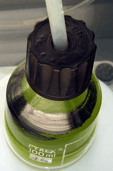
Solid-state grid energy storage
Knowledge transfer- patent rights sold to a company
May 2019
We patented a new technology for storing grid
energy in solid matter with high energy density. The
new technology addresses one of the main problems
of today's and future grids.
Because we cannot
efficiently store the energy produced during production
peaks for later use, the production-consumption
mismatch leads to grid instability. This is getting
even worse with more energy from renewable sources
being introduced into the grid. We invented a close-
cycle storing technology that allows overcoming this
problem on a global level.
The patent rights were sold to a private company called Institute CES doo. We will work together with them towards the implementation of this invention
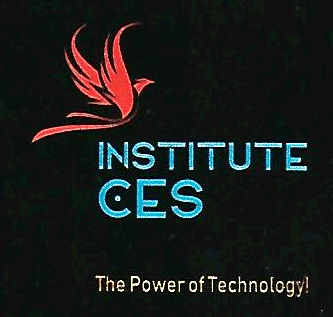
Materials Research Lab opens to industry through Interreg projects
2019
MRL is actively involved in industial cooperation
through
two Interreg projects. We are making our
facilities and expertise available to innovative
advanced industry in the fields of materials and
nanotechnologies
- Interreg SLO-AUT: Strengthening cross-border
competitivness, research and innovation (RETINA)
- Interreg SLO-IT: Open-access network for nanotechnology - based innovation (NANOREGION)
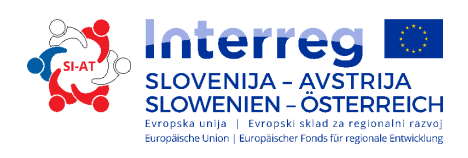

Honours from China
January 2018
Chinese Ministry of Education has
awarded M. Valant with
a title Distinguished International Expert "Overseas's
Master". The nomination for this award was submitted by
Institute of Fundamental and Frontier Sciences,
University of Electronic Science and Technology of China.
The collaboration between the institutions is gaining in a
momentum with staff exchange and new joint research.
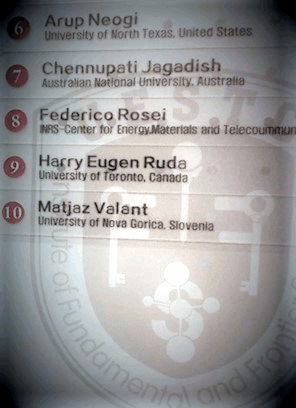
Metals and topological insulator - an incompatible pair
Appl. Surf. Sci. 471, 753 (2019); J. Phys. Chem. C 122,9980 (2018);
J Phys Chem C - in press (2020)
We showed unusual strong reactivity of Ti and
Ag deposited
on Bi2Se3 surface. The reactions
proceeds even at cryogenic temperatures.
New chalcogenide compounds are
formed.
So, if you want a stable electric contact on the
topological
insulator do not use anything else
than Au. Only
Au has been
found not to
chemically interact with Bi2Se3 at
room temperature.
PS. Congratulations to dr. Katja Ferfolja Figure Reaction products of Ag+Bi2Se3 after
for completing her thesis on this topic 2 days at room temperatures
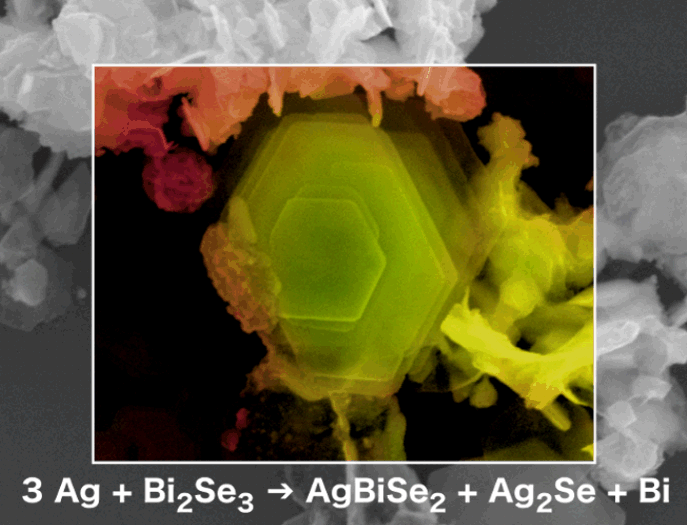
Theory of ion transport under electric fields
published by Nature Comm.
Nature Comm. 111, 3300(2020)
https://doi.org/10.1038/s41467-020-17173-w
The polarization work, is traditionally believed to
originated
from the dipole
of a single hoping ion.
We
showed that
such a classical picture does not hold
in
general. The effect of electric fields on reaction barrier
heights
can be simplifed to the electric work of a single
jumping ion
only in the case of subtle
symmetry-related
compensations
and
strong ionic character,
while in
general collective
environment effects are present. Our
findings will
not only impact on
theoretical/computational
modelling but also on how experimental measures are analyzed as high drift velocities
might be tagged "anomalous" only because of
old classical ideas.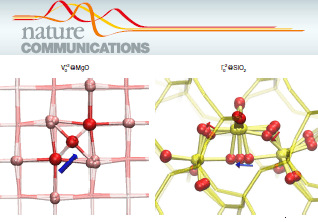
Open Seminar Day 2021
September 11, 2020
Materials Research Lab is organizing its annual Open
Seminar Day with a guest speaker and presentations of the
lab achievements from the last year. The program of the event
is here. The event will start on Tuesday Sept 13 at 9:30am in
our
seminar hall and ends with a social lunch at the nearby
restaurant
You are all invited to join us!
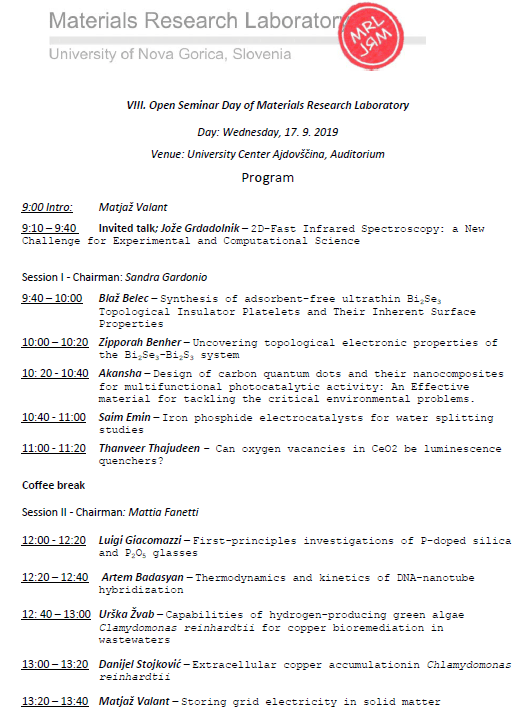
3-year project in collaboration with EPFL:
Defects in topological insulators
Nova Gorica - Lausanne, 1.12.2021-3.11.2024
The main problem that currently hinders the application
of the TI materials is their severe
n-type doping due to
the presence of defects. Because
of that they exhibit
non-polarized bulk current
making
them more like
a bad metal than an insulator. Achieving
the surface-
dominated spin-polarized
current is of key
importance
for the advanced TI-based technologies,
The objective
of this project is to tackle this problem by
innovative
post-procesing procedures.
EPFL’s tasks include the direct, local visualization of
the defect density in bulk and 2D
specimen and
manipulation of the defects inside TEM..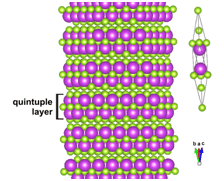
US patent granted
Pat. no.: US20200308715 A1
An innovation "Method for Electrical Energy Storage in
Solid Matter" was granted a patent by the United States
Patent and Trademark Office. The innovation was
generated at Materials Reserach Laboratory UNG by
professor Matjaz Valant and initially filed at the
Slovenian
Intellectual Property Office.
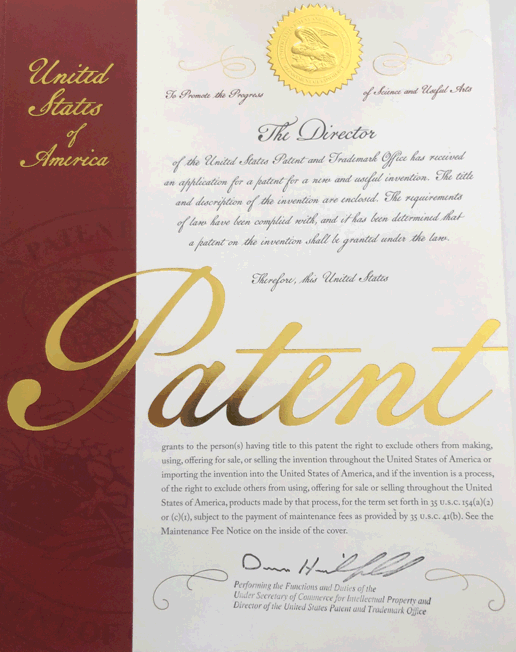
Advanced X-ray diffractometer installed!!
MRL lab, November 2021
The now toy at MRL will allow for advanced crystallographic
studies of surfaces,thin films and coatings. We have
a number of interesting techniques available, such as grazing
incidence, reflectivity measurements, reciprical space
mapping, rocking curves, pole figures, small x-ray scattering
(SAXS), high temeprtaure attachment..
You are welcome to collaborate with us on this instrument!!
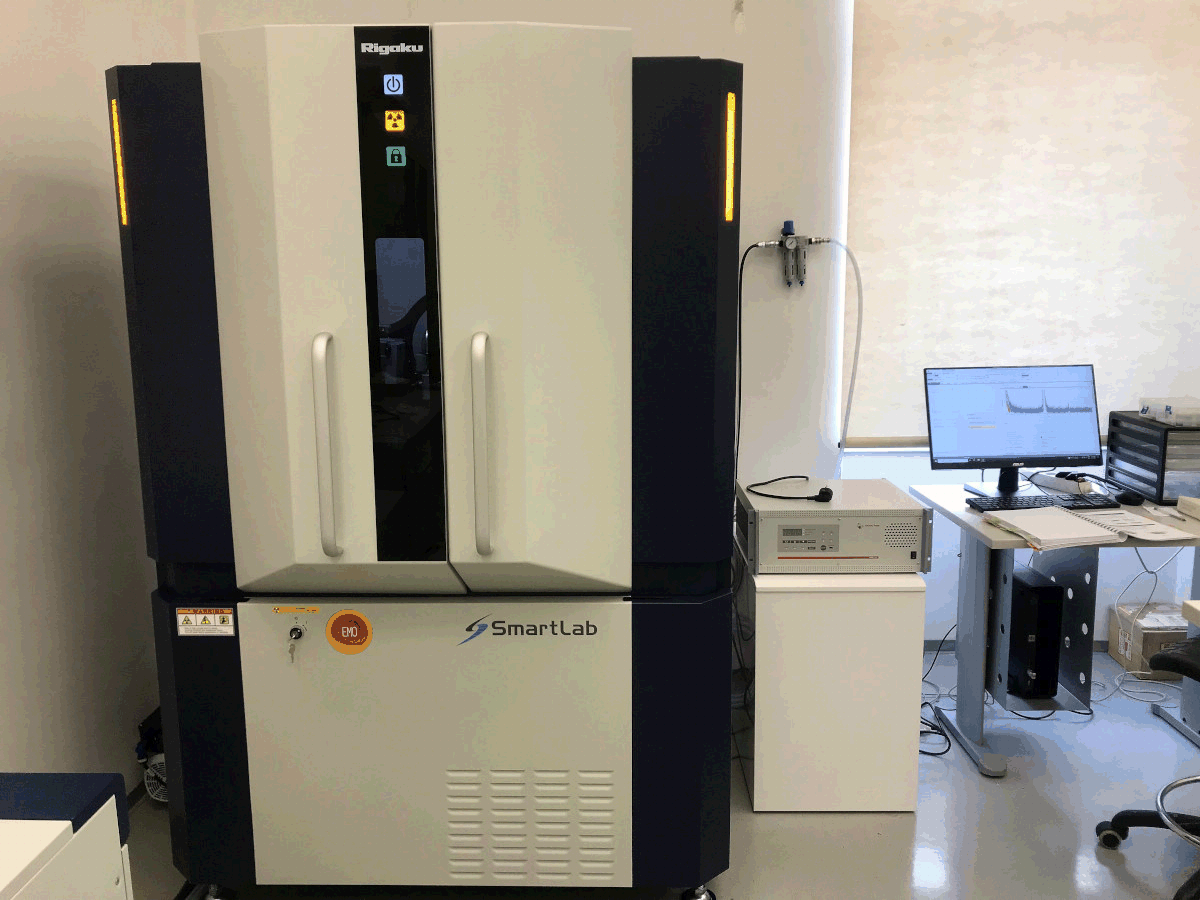
Time-resolved 2D IR spectrometer
MRL in cooperation with National Chemical Institute, October, 2021
Materials Research Lab in collaboration with National
Chemical Institute has acquired a two-dimensional
infrared
(2D IR) spectrometer. It is a cutting-edge
spectrometer
that
spreads signals into two frequency
dimensions, which
allows one to correlate vibrational
modes and time-resolve
structural dynamics. The temporal
resolution of the
technique is femtoseconds. This makes
it possible to
determine the impact of the local environment
on the
inter-and intra-molecular molecular dynamics of
adsorbates
in the field of catalysis.
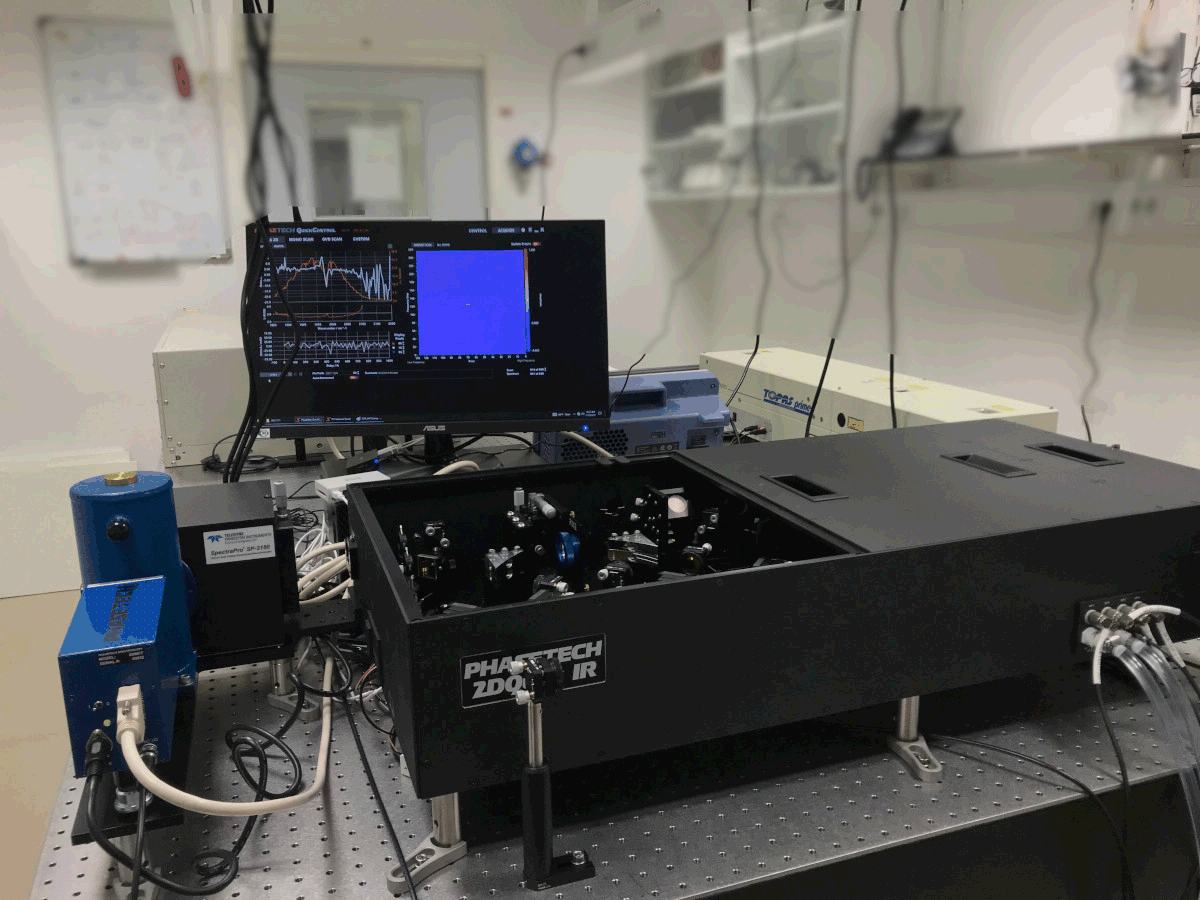
Green Technology Center established:
bridge between academia and industry
Nova Gorica, 1.12.2022
After a year of preparation the spin-off called Green
Technology Center is established.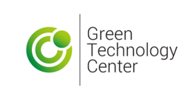 It is co-funded by the
It is co-funded by the
University of Nova Gorica and the City of Nova Gorica.
The mission of the Center is to become an infrastructural,
professional, educational and administrative support for
the transfer of green and sustainable innovations to
industry, agriculture and
the urban and natural
environment.
Breakthrough in oxygen evolution electrochemistry
Nature Comm. 2023 (https://doi.org/10.1038/s41467-023-36718-3)
With our partners from Institute of Fundamental
and Frontier Sciences, University of Electronic Science
and Technology of China, Chengdu we showed an
unusual non-covalent phenanthroline-CoO2
interaction that substantially elevates the population
of Co4+ sites for
improved water oxidation. This work
highlights the non-covalent interaction between
heterogeneous catalysts
and chelating ligands
as a new pathway to optimize electrocatalytic
activity and durability.
